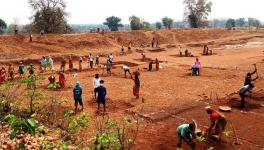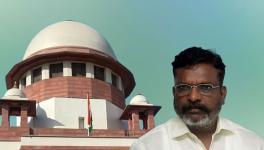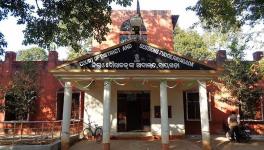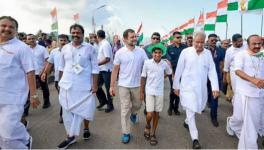Before Declaring Mandal Politics Dead, Recall Ambedkar’s Pictures at CAA Protests
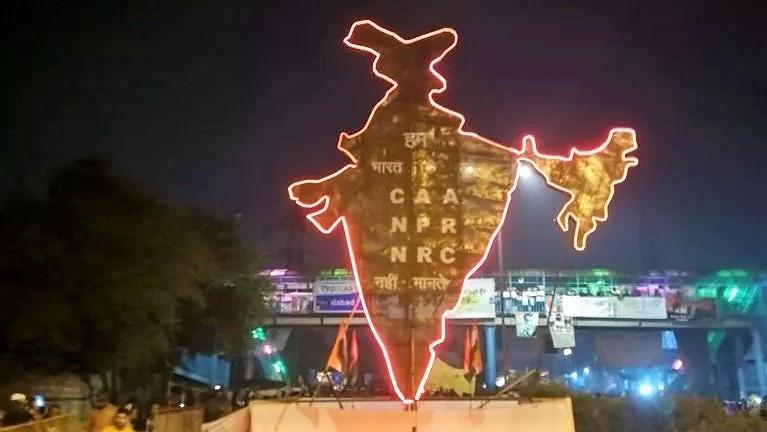
As the effects of the Uttar Pradesh elections continue to filter down, setting the stage for the general election in 2024, it seems the primary lesson that has been taken is that power and impunity, and a royal largesse, is what works. Issues of rights, especially of caste coalitions, are being dismissed, and the epitaph of Mandal politics is being written.
This hasty declaration of the end of caste politics is problematic for all sorts of reasons, but maybe most importantly because it ignores how narrowly the politics of equal rights has been interpreted. This was highlighted most brutally and powerfully by Anand Teltumbde in his chapter on the Khairlanji massacre of 2006 in his book, “Republic of Caste”. While the brutalisation and murder of women and children during the massacre were grotesque in the extreme, Teltumbde also highlights that “every rung of the relevant administrative apparatus from the lowest (a constable) to the highest (the superintendent of police), included personnel—both men and women—who were Dalit.”
Importantly, Teltumbde does not dismiss reservations. It would be hard to imagine the large protests that forced the state to act after it had initially tried to cover up and dismiss the atrocity without the economic and social mobility that reservations have created. Nonetheless, as the farce of governmental action in the Khairlanji case showed—including the declaration of the village in 2010 as “tanta-mukt gaon” (dispute free village)—it was not enough to bring about the abiding societal change that would allow justice to be done.
Khairlanji, the limitation of Mandal as merely “caste politics”, and the significant distance between the constitutional commitment to equal rights and its reality on the ground are the main issues by which we must see the outcome of Uttar Pradesh’s elections.
There were four main trends or issues before the voters: state failure in the pandemic, a sustained movement by farmers, the NRC/CAA protests, and a police and administration that acted with impunity. By definition, all these issues affected the most marginalised section of the population the most—those most denied healthcare, most likely to be landless agricultural labour, least likely to have perfect documentation, and most at risk of police high-handedness.
The NRC/CAA issue should be particularly obvious. As the former IAS officer Sasikanth Senthil stated, it may have uniquely targeted Muslims by leaving them out in the CAA, but an onerous process of document verification was going to hurt Dalits disproportionately because of a history of exclusion. There is a reason why the one leader whose portrait was most present at the NRC/CAA protests across the country was Dr Bhimrao Ambedkar. How did an issue of equitable justice, of a problem of graded inequality, become a “Muslim” issue? How did the classic problems of equality before the law, of social justice, the central issues around which Dr Ambedkar spent his activism and legal career, not become “Mandal” issues?
To be fair, the organisation that recognises that these are Mandal issues most clearly is the Sangh Parivar. It is not an accident that the violence—both by the mobs during Navratra and by the state in demolishing homes and shops—in Madhya Pradesh happened in tribal areas. It is very clear that “mandir” politics are not so much a response to “caste” politics but just another form of it. The distinction between it and Mandal politics is that the latter is supposed to aim towards an equitable society, while Mandir politics offers the opportunity to create a new disenfranchised group—Muslims, Christians, meat-eaters, atheists. There is an equality of sorts there, in that anybody can attack these communities with impunity, although the Sangh seems particularly keen to recruit—and implicate—erstwhile excluded communities in the violence.
If the opposition is to stand a chance, if it is to successfully challenge the politics of blood and violence that are degrading the country on a daily basis, it must engage with the reality of what Mandal politics has achieved so far—and how much is left to do. Without a clear articulation of the challenges that stand between an Indian and her chance to live in an equitable society, we are left with the disaster of Khairlanji—a promise of dignity horribly unfulfilled. Mandal politics has to be reimagined because it remains the single most potent idea to take India towards becoming a free country of free people. And for all those saying Mandal is dead, there is only one real answer: long live Mandal.
The writer is an author who lives in Delhi. His novel Jimmy the Terrorist was shortlisted for the 2009 Man Asian Literary Prize. The views are personal.
Get the latest reports & analysis with people's perspective on Protests, movements & deep analytical videos, discussions of the current affairs in your Telegram app. Subscribe to NewsClick's Telegram channel & get Real-Time updates on stories, as they get published on our website.










